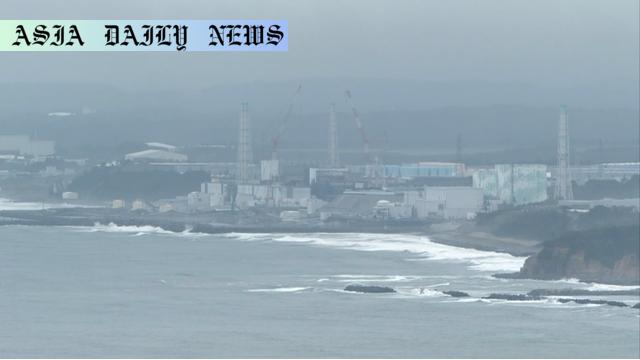Fukushima Debris Removal delays to late 2030s due to challenges in preparation and radiation-level reduction.
- Key Point 1: Work to remove molten fuel debris at Fukushima Daiichi is now postponed till the late 2030s.
- Key Point 2: TEPCO discovered complexities in preparation such as radiation-level reductions and facility construction.
- Key Point 3: Initial plans aimed to begin by early 2030s, but incomplete roadmaps have shifted this expectation.
- Key Point 4: Comprehensive decommissioning of Fukushima reactors is targeted for completion by 2051.

Introduction to Fukushima’s Ongoing Cleanup Challenges
The Fukushima Daiichi nuclear power plant, which suffered catastrophic meltdowns in three of its reactors following the 2011 earthquake and tsunami, continues to confront monumental recovery hurdles. Japan’s Tokyo Electric Power Company (TEPCO) has now announced that efforts to remove the molten fuel debris—regarded as one of the most critical and labor-intensive tasks within the decommissioning process—may not commence until the late 2030s. This marks a significant delay from the previously outlined timeline targeting the early 2030s.
The delayed progress underscores the extraordinary difficulties the project faces. A comprehensive understanding of molten fuel debris retrieval methods indicates that even the preparatory stages will take over a decade to sufficiently carry out. Specifically, issues around constructing new facilities, managing containment radiation exposure, and crushing debris safely have added layers of complexity.
Understanding Molten Fuel Debris: The Major Obstacle
Molten fuel debris consists of melted nuclear fuel mixed with structural components from the reactors, forming a hazardous and highly radioactive mass. Experts estimate approximately 880 tons of such debris remain within the plant’s ruined reactors. As this material combines structural fragments, it is far from straightforward to extract. Instead, it involves meticulous planning for radiation containment, debris handling, and equipment mobilization.
While initial plans aimed to begin retrieval from reactor No. 3 by the early 2030s, recent assessments by TEPCO suggest operational logistics will take substantially longer to implement than originally anticipated. The approach involves multiple steps: lowering specialized machinery into the reactor cores, breaking down debris fragments, and retrieving them safely. Radiation exposure limits and equipment precision leave no margin for error.
Timeline Adjustments: From Ambition to Realistic Execution
The Japanese government and TEPCO initially published a thorough decommissioning roadmap seeking to bring plant operations to a close within 40 years of the disaster—by 2051. However, given the latest setbacks, adherence to this timeline appears increasingly doubtful. The decision to extend pre-extraction preparation until the late 2030s stems from newfound obstacles when assessing infrastructure adaptability and removal strategies.
Processes such as reducing radiation exposure in reactor No. 3’s containment vessel have proven to exceed both original cost and time estimates. Constructing safety-compliant facilities above the reactor site further amplifies these complications. Radiological studies confirm continued unpredictability about areas surrounding damaged reactors, raising safety, design, and personnel management questions.
Implications for Decommissioning and Regional Safety
The delays carry significant implications not only for the timeline of reactor decommissioning but also for the overall perception of nuclear disaster recovery capabilities. Given the vast amount of debris that remains, extending preparatory milestones means communities around the Fukushima prefecture must sustain vigilance longer than predicted, impacting regional morale and recovery progress.
Moreover, international observers remain critical of Japan’s efforts to manage nuclear energy’s aftermath. As one of the most intricate and extended nuclear decommissioning projects globally, its success or failure will heavily influence global nuclear policy discussions. In addition, Fukushima serves as a case study in resilience versus hubris. The engineering lessons carry broad implications for energy recovery protocols across various disaster-prone regions worldwide.
Future Prospects: Reinventing the Roadmap
While delays often create justifiable frustration, they also represent an opportunity to refine error-prone parts of large-scale projects. Expectations for cleanup excellence set forth by the government demand they balance public transparency, technological innovation, and worker safety. For projects extending into mid-century, Japan faces the unenviable role of defining global standards and expectations surrounding disaster decommissioning.
Stakeholders now await updates on whether TEPCO and researchers could accelerate developmental breakthroughs in removal automation to mitigate future postponements. Ultimately, while no single remedy will reduce long-range complexity instantly, sustained commitment remains paramount for global trust moving forward.



Commentary
Reflections on Prolonged Cleanup Timelines at Fukushima
The delay in molten fuel debris retrieval at Fukushima Daiichi presents an unavoidable reminder of the unpredictable complexity accompanying nuclear disaster recovery. Nearly a decade after the catastrophic earthquake and tsunami, cleaning up the remains of this calamitous event has proven drastically more challenging than initial projections foresaw. While the decision to push milestones further may appear frustrating for residents, we must equally appreciate the intense precautionary measures driving such choices.
Technical Challenges Necessitate Caution
What some might interpret as indecisiveness on the government’s and TEPCO’s part, is likely a sign they are prioritizing safety above all else—a necessity when handling hazardous materials like nuclear fuel debris. Constructing facilities capable of withstanding radiation exposure while providing precision to retrieve debris without additional risks demands immense patience. This protracted pathway to success acknowledges harsh engineering and biological realities over public pressure for hastier cleanup timelines.
Global Significance of Fukushima’s Legacy
Looking at the broader picture, the delayed cleanup conveys lessons for nuclear stakeholders worldwide. The ongoing story of Fukushima reinforces debates over whether nuclear energy aligns with sustainable, long-term growth within disaster-sensitive regions. While stakeholders continue debating broader cleaner energy adoption, Fukushima serves forced lessons-versus-predicted methodologies, whose importance to renewable advocacy end unto reflective reflections against predictable disadvantages omit disasters or alterations due defer evacuated excess